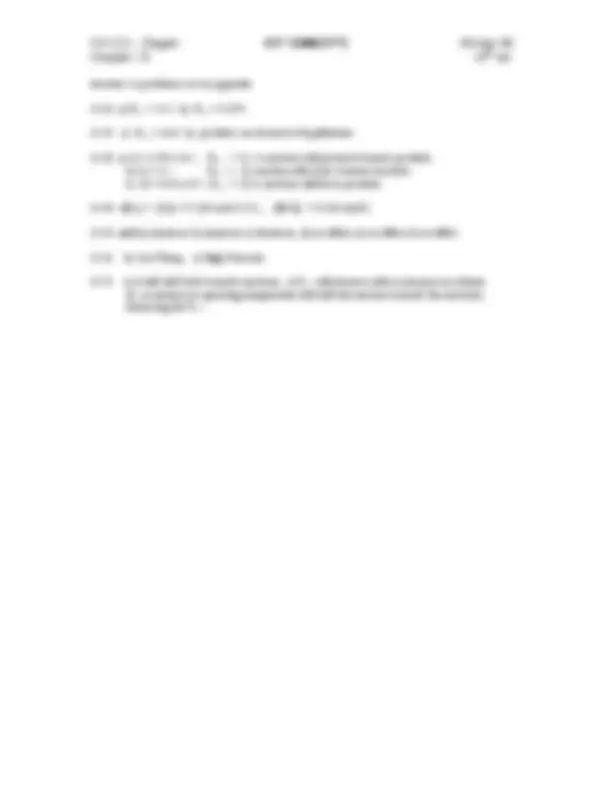



Study with the several resources on Docsity

Earn points by helping other students or get them with a premium plan


Prepare for your exams
Study with the several resources on Docsity

Earn points to download
Earn points by helping other students or get them with a premium plan
Community
Ask the community for help and clear up your study doubts
Discover the best universities in your country according to Docsity users
Free resources
Download our free guides on studying techniques, anxiety management strategies, and thesis advice from Docsity tutors
Material Type: Assignment; Professor: Ziegler; Class: General Chemistry III; Subject: Chemistry ; University: Central Oregon Community College; Term: Winter 2008;
Typology: Assignments
1 / 2

This page cannot be seen from the preview
Don't miss anything!


Class period 1 - Reading pp. 628 – 642
Class period 3 - Reading pp. 649 - 657
Answers to problems not in appendix 15.22 a) Keq = 13.3 b) Keq = 0. 15.30 a) Keq = 66.8 b) products are favored at Equilibrium 15.38 a) Q = 2.58 x 10-6; Keq > Q so reaction will proceed towards products b) Q = ∞ ; Keq < Q, reaction will move towards reactants. c) Q= 4.52 x 10-6; Keq > Q so reaction will favor products. 15.44 [Br 2 ] = [Cl 2 ] = 0.129 mol/1.0 L ; [BrCl] = 0.342 mol/L 15.52 yield a) increases b) increases c) decreases, d) no effect, e) no effect, f) no effect 15.56 b) low Temp, c) High Pressure 15.73 a) it will shift back towards reactants, c) PCl2 will increase with an increase in volume. d) an increase in operating temperature will shift the reaction towards the reactants, increasing the PCl.